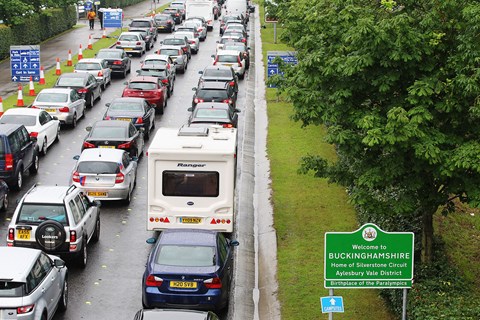► Euro 7 emissions rules set to be softened
► New European standards for new cars
► What EU7 means, when it’s due in law
The next round of European emissions standards, dubbed Euro 7 or EU7, are inching through the EU’s legislative process and are now likely to arrive in 2026 for passengers cars and 2027 for heavy goods vehicles.
The European Parliament has approved its guidance on the emissions laws and it appears that they will be softer than originally conceived. Every new car sold in Europe will have to be able to pass EU7, which replaces the current EU6 emissions regs.
It’s still not yet law and there is plenty of red tape yet to unravel: the European Parliament will now finesse the final approach with the European Commission and European Council, so expect more compromise and tweaking to follow. It is expected that the final document will be finalised by early 2024.
EU7: the background
Euro 7 is set to continue the emissions limits from EU6, limiting the nitrous oxides (NOx), particulate matter and carbon monoxide a combustion engine can emit. However, it now adds particulate emissions from brakes and tyres.
With the demise of petrol and diesel cars planned some time between 2030 and 2035, we’ve got our first insight into what the emissions testers will be concentrating on when cars don’t have exhaust emissions. For the first time, electric cars, tyres and brakes are all set to be assessed, with testers rating their various impacts on the environment, both locally and globally.
There are also plans afoot to keep tabs on cars throughout their lives, so they can be continually assessed – not just when they’re first registered and brand new.
How is Euro 7 targeting electric cars?
Electric cars don’t emit anything from an exhaust, so emissions testers shouldn’t be interested in them, right? Nope, the team behind the Euro 7 proposal have found a number of ways to assess EVs, concentrating on the electric part and several bits that are common to all vehicles.
First of all, Euro 7 is set to go after the battery, and it will set standards for how much capacity a unit should have after a certain period of time. We don’t know what the parameters are yet, but think a requirement to be able to offer a certain percentage after a set number of years. The idea is that you should be able to get a guaranteed minimum range when you look at a used car.

Testers are also turning their attention to the emissions produced by any car, regardless of powertrain. These emissions are not from the engine at all, as the tiny microplastics produced by a car’s tyres and brakes will also be assessed. With no CO2, NOx or other elements coming out of the rear end of the electric vehicles of the future, it is reckoned that these factors will be the biggest contributor to air pollution from road transport in years to come.
What about petrol and diesel cars?
Petrol and diesel cars and vans are still set to be a feature on our roads when Euro 7 comes in, so they aren’t forgotten. CO2 is not a major element of the latest proposal, though, as the path to zero CO2 has already been laid out, says the European Commission. Instead they are choosing to tighten up requirements on NOx targets and introducing goals for formaldehyde and ammonia due to their role in creating urban smog.
Another notable change, as far as targets are concerned anyway, is the decision to unify the tests – petrol and diesel cars will no longer be subject to different targets and will both have to hit the same levels. This means both will have to meet the 60mg/km target for NOx for example – this isn’t a huge change as petrols already had to meet this level under Euro 6 while diesel cars had an 80mg/km target.
How will testing change?
In a move that is not likely to be universally welcomed by manufacturers, Euro 7 will require cars to come with yet more sensors. These sensors will measure a car’s emissions throughout their life, with the theory being that a car can be continuously monitored out in the real world. Theoretically this should reduce costs overall though.

However, vehicles will have to comply with the new regulations for longer. Under Euro 6 they only had to meet targets for the first 100,000km (62,000 miles) and five years but this is set to double to 200,000km (124,000 miles) and 10 years.
Other details will see vans and heavy duty vehicles, such as lorries and buses, subject to the same rules, albeit different targets. Testing will also add more driving conditions to the real-world element of the assessment, with temperatures of up to 45 degrees being factored in to assess performance in a hot summer.
Testing is only at the proposal stage but is set to come into force from 1 July 2025 for cars, while large vans, lorries and buses etc have until 1 July 2027.